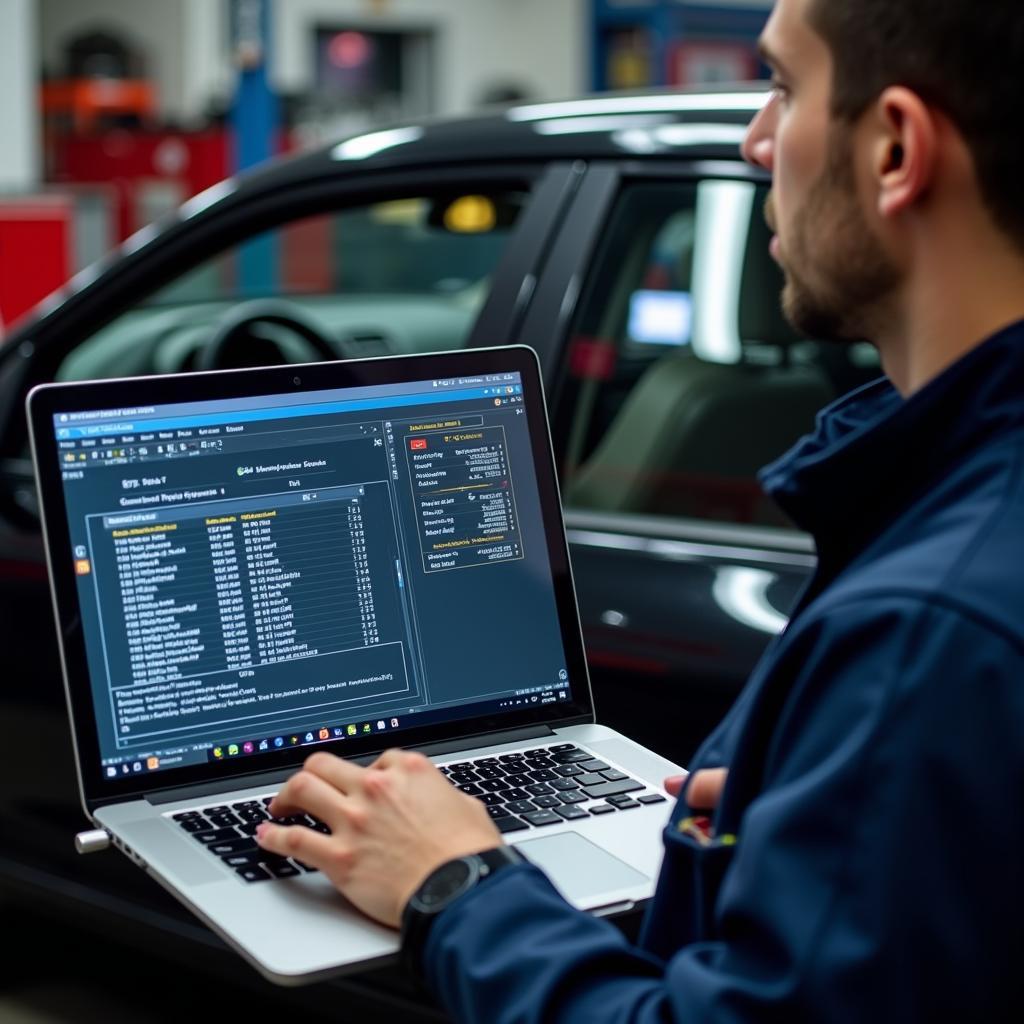Changing your car battery and suddenly seeing the check engine light illuminate can be alarming. This situation, where a changed battery check engine light came on, is surprisingly common and often doesn’t indicate a serious problem. This article will explore why this happens and guide you through the steps to take when you encounter this issue.
Why Does the Check Engine Light Come On After a Battery Change?
The check engine light is your car’s way of telling you something isn’t quite right with its electronic systems. When you disconnect the battery, the car’s computer, also known as the Engine Control Unit (ECU) or Powertrain Control Module (PCM), loses its stored memory. This memory includes learned data about your driving habits, fuel efficiency, and emission control systems. When the battery is reconnected, the ECU needs to relearn these parameters. During this relearning phase, the check engine light might come on. Sometimes, disconnecting the battery can also temporarily disrupt the delicate balance of sensors and systems, triggering the light.
Common Causes of a Check Engine Light After Battery Replacement
- Loss of Learned Data: As mentioned above, the ECU losing its learned data is the most frequent culprit. The car needs to re-adapt to your driving style and re-establish its baseline readings.
- Low Voltage: If the new battery wasn’t properly installed or has a low charge, it can cause voltage fluctuations that trigger the check engine light.
- Loose Connections: Double-check all battery connections. A loose or corroded terminal can disrupt the electrical flow and trigger the light.
- Accidental Short Circuit: While rare, a short circuit during the battery replacement process can damage sensitive components and illuminate the check engine light.
What to Do When the Check Engine Light Comes On After a Battery Change
- Check the Battery Connections: Ensure the positive and negative terminals are securely attached and free of corrosion.
- Drive the Car: Often, the check engine light will turn off on its own after the car has been driven for a few cycles (typically 50-100 miles). This allows the ECU to relearn its parameters.
- Use an OBD-II Scanner: If the light persists, invest in or borrow an OBD-II scanner. This device plugs into your car’s diagnostic port and reads the trouble codes stored in the ECU. This will tell you exactly why the light is on.
- Consult a Mechanic: If the OBD-II scanner reveals a complex issue or you’re uncomfortable addressing it yourself, consult a qualified mechanic. Remote diagnostic services can often provide initial assessments and guidance.
Using Remote Diagnostics and Programming
Modern vehicles can be diagnosed and even repaired remotely. Companies offering remote diagnostic services can connect to your car’s computer through specialized software, read the error codes, and sometimes even reprogram or reset certain modules. This can be a convenient and cost-effective way to address some check engine light issues.
“Remote diagnostics is rapidly changing the automotive repair landscape. It allows for quicker diagnosis and, in some cases, immediate fixes without the need for a physical visit to a repair shop.” – John Smith, Senior Automotive Diagnostic Technician at Remote Auto Solutions.
Troubleshooting Specific Trouble Codes
Once you have the trouble codes from the OBD-II scanner, you can pinpoint the problem. Some common codes related to battery changes include:
- P0101 (Mass Air Flow Sensor): Disconnecting the battery can sometimes affect the MAF sensor readings. Cleaning the sensor or replacing it might be necessary.
- P0171/P0174 (Lean/Rich Exhaust): These codes relate to the fuel-air mixture. A battery disconnect can sometimes disrupt the system, but it usually resolves itself after a few driving cycles.
- U0100 (Lost Communication with ECM/PCM): This indicates a communication issue with the car’s computer, potentially caused by a loose connection or a faulty component related to the battery replacement.
 Mechanic Performing Remote Diagnostics on a Car
Mechanic Performing Remote Diagnostics on a Car
“While many check engine light issues after a battery change are minor and self-resolvable, it’s crucial to address any persistent codes promptly to prevent potential damage and ensure optimal vehicle performance.” – Maria Garcia, Lead Automotive Engineer at AutoTech Solutions.
Conclusion
Seeing the check engine light after changing your car battery can be frustrating, but it’s usually not a cause for major concern. By understanding the reasons behind this common issue and following the steps outlined above, you can quickly diagnose and resolve the problem. Remember to check the battery connections, drive the car for a few cycles, and utilize an OBD-II scanner for more specific diagnostics. If the light persists or the codes reveal a complex issue, don’t hesitate to seek professional assistance. Using remote diagnostic services is a convenient and increasingly effective way to troubleshoot these kinds of problems.
FAQ
- Will the check engine light always come on after a battery change? No, it doesn’t always happen, but it’s common enough to be aware of.
- Can I drive my car with the check engine light on? It’s generally safe to drive short distances, but a persistent light should be investigated.
- How long does it take for the check engine light to reset after a battery change? It can take anywhere from a few driving cycles to a few days.
- What does it cost to have a mechanic diagnose a check engine light? The cost varies but typically ranges from $50 to $150 for a diagnostic scan.
- Can I reset the check engine light myself? Yes, you can use an OBD-II scanner to clear the codes, but this only temporarily turns off the light if the underlying problem persists.
- Is it safe to disconnect the battery myself? Yes, but take precautions to avoid short circuits and ensure you have the radio code if your car requires one.
- What if the check engine light comes back on after I reset it? This indicates the underlying problem hasn’t been resolved and requires further investigation.

